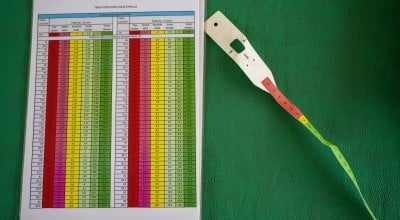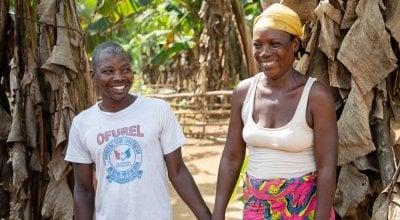
Knowledge Hub
Malnutrition is 100% preventable. Yet it affects millions of people worldwide and remains responsible for more ill-health than any other cause, particularly in women and children. This is one of the reasons why so much of our work focuses on the prevention and treatment of malnutrition. This photo story illustrates what our work consists of, revealing exactly how we try to combat malnutrition in some of the world’s poorest and most vulnerable communities.
1. Home gardens
The best way to prevent malnutrition is to eat a healthy and varied diet. However, for those living in some of the world’s poorest countries who can’t grow, afford, access, or consume the right foods and nutrients, this can be a challenge.
This is where Concern steps in.

Home gardens are essentially vegetable patches designed to maximise the production of food throughout the year - even in difficult conditions. Concern delivers the seeds and training people need to grow their own kitchen garden and provides them with nutritious vegetables such as spinach and tomatoes. Through this, they have a healthy source of food all year round.

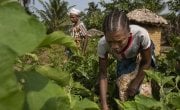
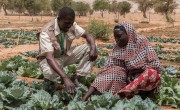
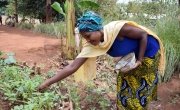

Zenon Ndikuriyo, who works as a Health and Nutrition Coordinator for Concern in Burundi, describes how home gardens work.
The [home garden] is a simple structure; circular and raised above the ground with an inner circular basket in the centre where compostable waste is added to nourish the soil.

The gardens produce an array of vegetables ranging from cabbages to carrots. They provide a nutritious and diversified diet to families, especially children under five for whom nutrition is so crucial.
2. Ready to use therapeutic food (RUTF)
For decades, health and humanitarian organisations – including Concern – searched for alternatives to treating malnourished children during crises and emergencies to replace the traditional milk-based diet provided through clinical settings.
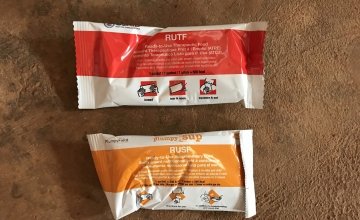
Many factors prevent people going to health facilities for treatment. These include:
- The distance from and time spent going to the centre and the cost of treatment and transport.
- The duration of the therapeutic milk treatment (up to five weeks), which prevents parents and caregivers from looking after other children or going to work, as it must be administered as an in-patient treatment.
- The dangers surrounding needing water to administer treatment due to waterborne bacteria and disease being rife.
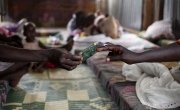
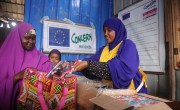
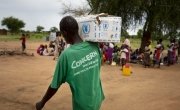
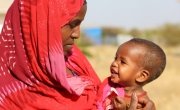
The discovery of RUTF in the late 1990s, and then introduced as the main weapon against malnutrition during the early 2000s, has changed the future of treating malnourished children forever.

Why?
- It provides all the nutrients required for recovery.
- It has a good shelf life, and does not spoil easily - even after opening.
- Since RUTF is not water-based, the risk of bacterial growth is very limited, and consequently it is safe to use without refrigeration at household level.
- Parents can treat babies receiving RUTF at home. This reduces cost and time away from home and consequently increases the likelihood of their mums bringing them into a clinic to receive their treatment supply in good time.
- And, most important of all, malnutrition death rates can be cut in half.
3. Community Management of Acute Malnutrition (CMAM)
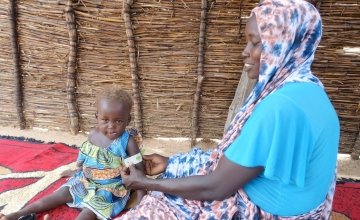
For almost 20 years, our CMAM approach to tackling acute malnutrition has been extremely effective - so much so that it has become the preferred approach for tackling malnutrition internationally. The central principle of CMAM is to treat malnourished children in their homes. This approach reaches more children and reduces the risks and expenses in travel for parents, guardians, malnourished children and their siblings.
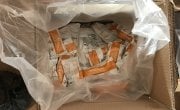
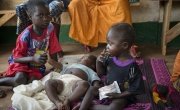

Malnourished children who have been admitted to the CMAM programme are provided with weekly medical treatment and given one week's supply of therapeutic food to take home - RUTF. And, as we have seen, this micronutrient-enriched food is the key to success.
4. Ensuring access to clean safe water and good sanitation to prevent illness
So much of the world’s water is contaminated. Drinking contaminated water, which contains bacteria from human as well as animal poo, often leads to diarrhoea, meaning that any nutrients eaten are not absorbed by the human body. This poses a huge health risk, but if there is no other way to get clean water then people are forced to take the risk.

Likewise, when going to the toilet, many people in the countries we work in do not have any soap or water to wash their hands. Consequently, when feeding a baby, making food or eating it themselves, they end up ingesting the bacteria, which can lead to more diarrhoea, or at the very least a poorly tummy. However, some simple solutions save many people’s lives.
WASH stands for Water, Sanitation and Hygiene.
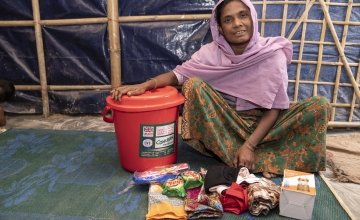
The “W” can mean drilling a borehole and installing a hand pump; or installing a structure to take and treat water coming from an underground spring. Where something technical like this is not possible, small water purification tablets can treat the water, killing all the bacteria and keeping it clean.
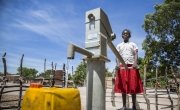
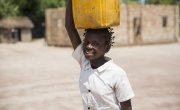
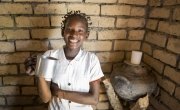
The “S” means making sure that people use a safe, clean toilet – and supporting people to build their own household latrine.

And last but not least, the “H” means making sure that hygiene and specifically handwashing practices are correct – making sure that people understand why they should wash their hands, that they actually DO wash their hands, but also that they have the means to be able to do this properly with water and soap.


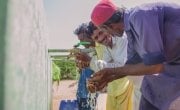

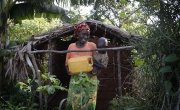
Campaigning for wider action on malnutrition
As well as our work on the ground to fight malnutrition, we are also campaigning for more action from the international community. This year, there is an important nutrition summit, which has the power to save and transform millions of lives. But we need world leaders to step up.
Will you sign our petition asking the UK to commit to tackling global malnutrition at the summit?
The root cause; the root solution
Our goal of ending extreme poverty can only be achieved by tackling poverty’s root causes – and top among them is malnutrition. For many of the 50 years we’ve been operating, we have been leading the way with sector-defining programmes that are changing people’s lives for the better. And we will continue to do so for the next 50 years - or as long as we are needed.
Other ways to help
Donate now
Give a one-off, or a monthly, donation today.
Join an event
From mountain trekking to marathon running, join us for one of our many exciting outdoor events!
Buy a gift
With an extensive range of alternative gifts, we have something to suit everybody.
Leave a gift in your will
Leave the world a better place with a life-changing legacy.
Become a corporate supporter
We partner with a range of organisations that share our passion and the results have been fantastic.
Create your own fundraising event
Raise money for Concern by organising your own charity fundraising event.



